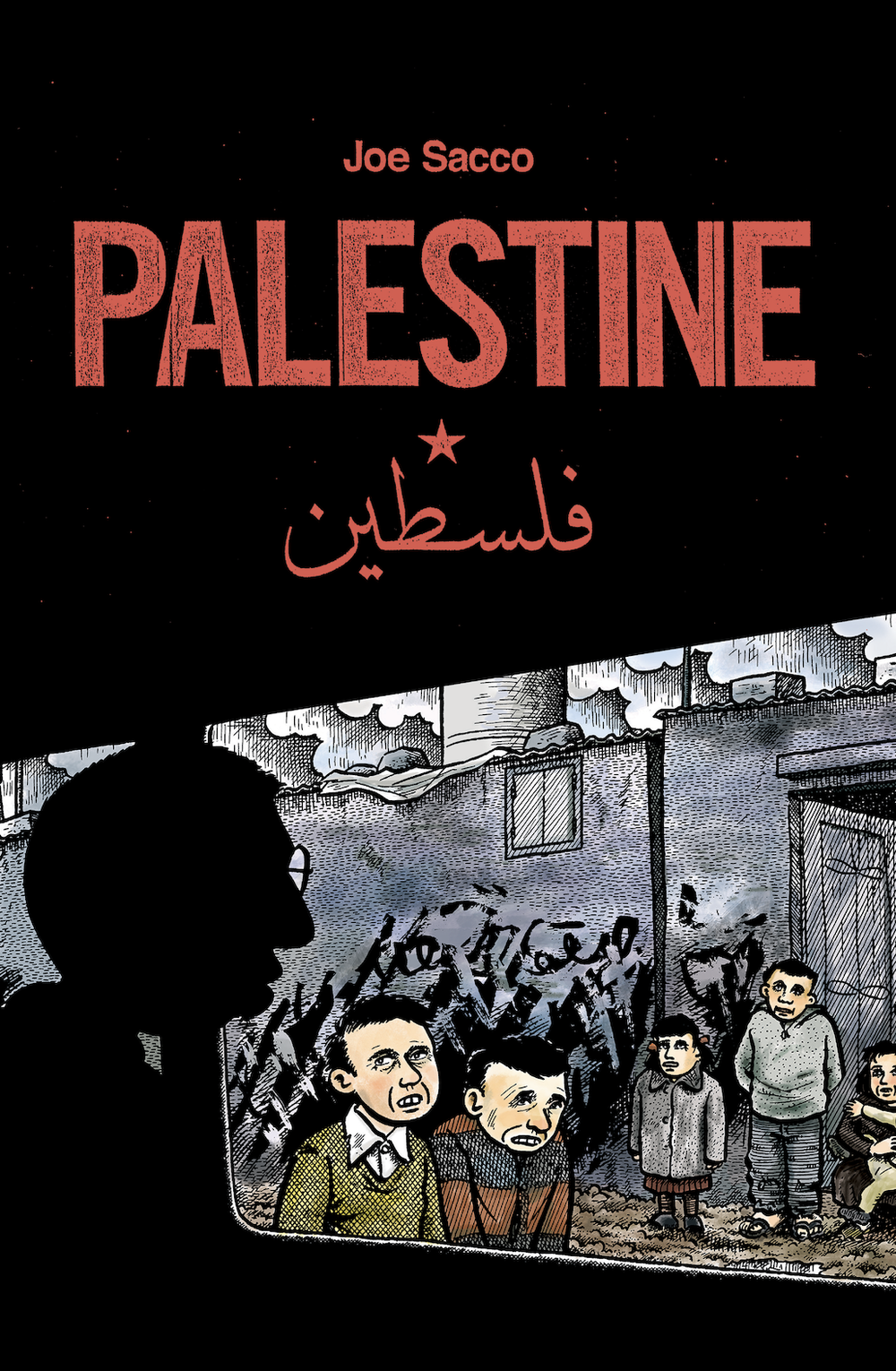Section Branding
Header Content
An acclaimed graphic novel is seeing a resurgence, brought on by the war in Gaza
Primary Content
When cartoonist Joe Sacco first published Palestine a little more than 30 years ago, most people were indifferent. The nonfiction graphic novel was part comic book, part memoir of his journeys through the West Bank and Gaza Strip, and nothing like it had ever really been published before.
Today, the acclaimed graphic novel is considered a trailblazing work, and as the war in Gaza continues to rage, the book is experiencing a resurgence. Demand is so high that the book is out of stock, prompting its publisher to take the rare step of ordering a rapid reprinting.
Gary Groth, president and co-founder of Fantagraphics, said the newfound interest in Palestine began after the Oct. 7 attack by Hamas militants that killed more than 1,200 people in Israel. The attack unleashed an Israeli bombardment of Gaza that has so far killed more than 24,000 Palestinians, according to health officials in Gaza.
"You don't have momentous events like this occur that are relevant to most books," he said. "The subject matter, unfortunately, appears to be timeless."
Sacco told NPR he originally traveled to the region out of a desire to talk to Palestinians, a perspective he never had growing up.
"I was particularly interested because I felt that journalism, which is what I had studied, had not served me well," he said. "[It] had actually given me quite a skewed version of events in the Middle East in general and in the Palestinian territories in particular."
At the time, Sacco was working as a full-time cartoonist after not finding a satisfying journalism job. But when he arrived on his trip, his journalistic background kicked in when he realized the importance of interviewing civilians to show the daily reality of living under occupation.
"There were all these things about the occupation I began to find out. I think the thing that really sticks in my head is how all these things sort of led up to attacks on people's dignity," he said. "Because when you cannot go from one point to another without being stopped, without being checked, without being taken out of the car, when you worry about going to school, when you're taken to prison and you're beaten, crowded together in very unsanitary situations, all these things are obviously an attempt to degrade people."
He initially didn't have a clear idea of format other than that he wanted to draw himself in the scene, which he later realized the importance of. "Because it shows the reader that all this is being filtered through a human being. I'm not the all-seeing journalist floating above that knows everything and, you know, has it all figured out," he said.
Palestine would become a pioneering work that popularized a new kind of storytelling: "comics journalism."
Groth attributes the book's lasting success in large part to its humanistic nature. "I think one of its great strengths is that it portrays the Palestinians as three-dimensional human beings. And it's not a strident book. It's not ideologically divisive in that way," said Groth.
Although Sacco is glad his book can help inform readers, its resurgence comes tinged with sadness that the topic still has such validity.
"In some ways, you know, you need the context, and in other ways, how much do you need the context? I mean, sit a child in front of the TV and they will know right away it's not right," Sacco said, referring to the war in Gaza. "You almost don't need context when you see that level of violence visited on civilians, on women and on children."
But the advantage that drawings have over images in the news, he said, is that drawings are more digestible to look at. "You know, that there's a filter between you and the violence and that's the drawn image."
"And I think they can take you back into the past," Sacco continued. "You can reimagine with drawings the past — what the refugee camps used to look like and what they look like now. You can show that continuum."
Copyright 2024 NPR. To see more, visit https://www.npr.org.



